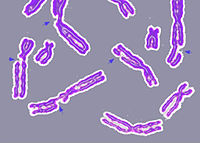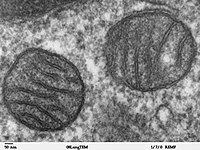
The type 1 transmembrane glycoprotein B7‐H3 interacts with the glycolytic enzyme ENO1 to promote malignancy and glycolysis in HeLa cells
Sign Up to like & getrecommendations! Published in 2018 at "FEBS Letters"
DOI: 10.1002/1873-3468.13164
Abstract: The role of the type 1 transmembrane glycoprotein B7‐H3 is controversial in tumorigenesis; thus, a better clarification of its involvement in cancer is crucial. In the present study, 79.3% of cervical cancer samples were found… read more here.
Keywords: glycolysis; type transmembrane; transmembrane glycoprotein; hela ... See more keywords

α‐Pinene inhibits the growth of cervical cancer cells through its proapoptotic activity by regulating the miR‐34a‐5p/Bcl‐2 signaling axis
Sign Up to like & getrecommendations! Published in 2022 at "Drug Development Research"
DOI: 10.1002/ddr.21994
Abstract: Among gynecological tumors, cervical cancer (CC) has the second‐highest prevalence and mortality rate. α‐Pinene is a bicyclic monoterpenoid compound extracted from pine needles that carried promising anticancer properties. Nevertheless, its effect on CC and the… read more here.
Keywords: pinene; cervical cancer; apoptosis; hela cells ... See more keywords

Proteomic Profiling Reveals the Induction of UPR in Addition to DNA Damage Response in HeLa Cells Treated With the Thiazolo[5,4‐b]Quinoline Derivative D3ClP
Sign Up to like & getrecommendations! Published in 2017 at "Journal of Cellular Biochemistry"
DOI: 10.1002/jcb.25753
Abstract: 9‐[(3‐chloro)phenylamine]‐2‐[3‐(diethylamine)propylamine]thiazolo[5,4‐b]quinolone (D3ClP) is a bioisostere of N‐(4‐(acridin‐9‐ylamino)‐3‐methoxyphenyl)methanesulfonamide (m‐AMSA) a DNA topoisomerase II inhibitor with proven cytotoxic activity and known to induce DNA damage and apoptotic cell death in K562 cells. However, recent evidence is not… read more here.
Keywords: dna damage; cells treated; dna; hela cells ... See more keywords

Theaflavin and epigallocatechin‐3‐gallate synergistically induce apoptosis through inhibition of PI3K/Akt signaling upon depolymerizing microtubules in HeLa cells
Sign Up to like & getrecommendations! Published in 2019 at "Journal of Cellular Biochemistry"
DOI: 10.1002/jcb.27886
Abstract: Theaflavin (TF) and epigallocatechin‐3‐gallate (EGCG) both have been reported previously as microtubule depolymerizing agents that also have anticancer effects on various cancer cell lines and in animal models. Here, we have applied TF and EGCG… read more here.
Keywords: combination; akt signaling; theaflavin epigallocatechin; pi3k akt ... See more keywords

A natural product enhances apoptosis via mitochondria/caspase‐mediated pathway in HeLa cells
Sign Up to like & getrecommendations! Published in 2019 at "Journal of Cellular Biochemistry"
DOI: 10.1002/jcb.28939
Abstract: Cervical cancer is the fourth most lethal human malignancy and the leading cause of death among females around the world. Many antitumor agents have microbial origins. 5′‐epi‐SPA‐6952A is a new 24‐membered macrolide isolated from the… read more here.
Keywords: apoptosis; epi spa; spa 6952a; cell ... See more keywords

Spatial Distribution of Intracellular Ion Concentrations in Aggregate-Forming HeLa Cells Analyzed by μ-XRF Imaging.
Sign Up to like & getrecommendations! Published in 2022 at "ChemistryOpen"
DOI: 10.1002/open.202200024
Abstract: Protein aggregation is a hallmark of several severe neurodegenerative disorders such as Huntington's, Parkinson's, or Alzheimer's disease. Metal ions play a profound role in protein aggregation and altered metal-ion homeostasis is associated with disease progression.… read more here.
Keywords: ion concentrations; hela cells; intracellular ion; distribution ... See more keywords

Antitumor activity of pachymic acid in cervical cancer through inducing endoplasmic reticulum stress, mitochondrial dysfunction, and activating the AMPK pathway
Sign Up to like & getrecommendations! Published in 2022 at "Environmental Toxicology"
DOI: 10.1002/tox.23555
Abstract: Pachymic acid has various pharmacological effects, including anti‐inflammatory, antioxidant, immunomodulatory, and antitumor. However, the role of pachymic acid in cervical cancer remains unclear. So, we investigated the effects of pachymic acid in cervical cancer and… read more here.
Keywords: cervical cancer; hela cells; acid cervical; acid ... See more keywords

Low concentrations of antimony impair DNA damage signaling and the repair of radiation-induced DSB in HeLa S3 cells
Sign Up to like & getrecommendations! Published in 2017 at "Archives of Toxicology"
DOI: 10.1007/s00204-017-2004-z
Abstract: Antimony is utilized in a large variety of industrial applications, leading to significant environmental and occupational exposure. Mainly based on animal experiments, the IARC and MAK Commission have classified antimony and its inorganic compounds as… read more here.
Keywords: dna; antimony; induced dsb; hela cells ... See more keywords

The use of Toxoplasma gondii tachyzoites produced in HeLa cells adhered to Cytodex 1 microcarriers as antigen in serological assays: an application of microcarrier technology
Sign Up to like & getrecommendations! Published in 2018 at "Cytotechnology"
DOI: 10.1007/s10616-018-0269-6
Abstract: Toxoplasma gondii can infect nearly all warm-blooded animals, including humans. In the laboratory diagnosis of toxoplasmosis, serological tests have importance in detecting antibody response. Traditionally T. gondii tachyzoites grown in vivo are being used as… read more here.
Keywords: hela cells; gondii tachyzoites; cells adhered; adhered cytodex ... See more keywords

The inhibition of HeLa cells proliferation through SPARCL1 mediated by SPP1
Sign Up to like & getrecommendations! Published in 2021 at "Cytotechnology"
DOI: 10.1007/s10616-020-00443-2
Abstract: Secreted protein acidic and rich in cysteines-like 1 (SPARCL1) is implicated in tumor progression and considered as a tumor suppressor. Aim of the study is to investigate the role of SPARCL1 in the regulation of… read more here.
Keywords: overexpression; hela cells; sparcl1; proliferation ... See more keywords

Induction of Apoptotic Cell Death on Human Cervix Cancer HeLa cells by Extract from Loranthus yadoriki
Sign Up to like & getrecommendations! Published in 2018 at "Biotechnology and Bioprocess Engineering"
DOI: 10.1007/s12257-018-0033-y
Abstract: Loranthus yadoriki, one of the Korean mistletoe species, has been already known for anti-viral effects, but the molecular basis that it caused apoptosis in cancer cells was not definitely revealed yet. The aim of this… read more here.
Keywords: death; loranthus yadoriki; human cervix; hela ... See more keywords